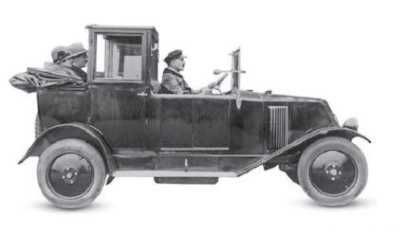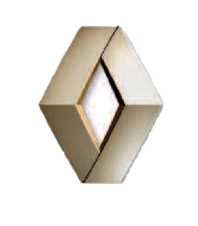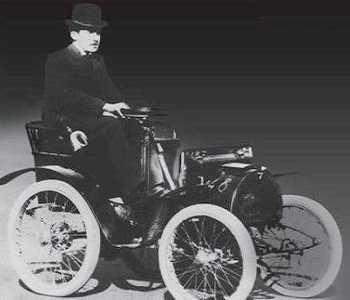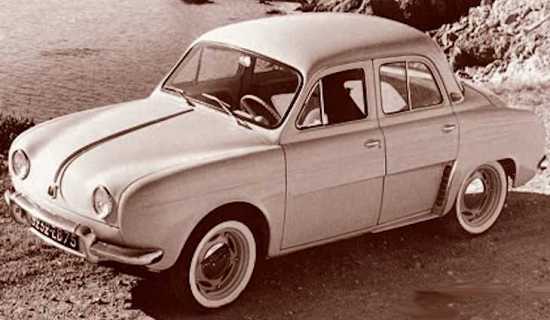THE HISTORY OF FRANCE’S motor industry would be very different had Louis Renault chosen to work in the family button-making business. Born in 1877 and the youngest of five brothers, his ambitions lay elsewhere. In 1898, at the age of 21, Louis built a “quadricycle” in a small workshop at the family home in Billancourt, Paris.
Although he intended to build only one car for himself, the demand for replicas was such that he became a full-time car builder a year later, with two of his siblings providing the funding. By the end of 1899, Société Renault Fréres had made 71 cars, and in 1902 Renault began making its own engines.

Renault 6CV taxi 1926
Renault 6CV taxi, 1926 Although simple in looks, the 6CV proved very popular, being sturdy and extremely economical.
The cars proved successful in city-to-city races, with Marcel Renault winning the 1903 Paris-Vienna event in a 3.8-liter Type K model. By 1907 Louis Renault had acquired most of the company’s shares and set about building cars in greater volume. In 1913 Renault was producing more than 10,000 cars and commercial vehicles per year, making it the largest vehicle manufacturer in France. The bulk of these were small, two-cylinder cars, many of which were sold as taxis-at the time there were over 3,000 Renault cabs on the streets of Paris alone.
By the end of World War I, Renault’s coffers had increased due, in part, to the sale of trucks and tanks to the French army. Nevertheless, the company began losing ground to its competitors in the civilian market. By the mid-1920s the firm’s models seemed old-fashioned, many having a distinct pre-war look. Citroën, in particular, consistently produced superior cars. Renault responded with a range of handsome six-cylinder cars, and also the striking eight-cylinder Reinastella model of 1929.
The Nervastella, the Reinastella’s smaller sister, triumphed at the 1930 Moroccan Rally, and the Nervasport, a more agile version of the Nervastella, won the Monte Carlo Rally of 1935. Production of large Renault models ceased at the outbreak of World War II in September 1939, but the smaller four-cylinder Juvaquattre, Novaquattre, and Primaquattre models continued to be made until France fell to Germany in June 1940.

Believing the war would soon end, Louis Renault kept his factory open, eager to preserve his employees’ jobs. It was a disastrous decision, and the German army took control of his factories for its own ends. After Paris was liberated in August 1944, Renault was arrested as a collaborator and imprisoned. Poorly treated and in ill health, he died just three months later. In 1945 the firm was nationalized and refocused on making mainstream cars for the masses. Chief among the new models was the 4CV, which at its launch in September 1946 was one of the smallest four-door sedans ever made.
Powered by a rear-mounted, 760 cc, four-cylinder engine, it had a wheelbase of just 82,5 in (210 cm). The 4CV was an instant success, and over 1 million 4CVs were made until production ended in 1961. Although an unlikely competition car, the 4CV triumphed in Italy’s daunting Mille Miglia road race from 1952 to 1957.Renault followed the 4CV with the 845 cc Dauphine in 1956, which was hugely popular despite its reputation for poor handling and a propensity to rust. Some 200,000 Dauphines were sold in the United States until 1960, and the Dauphine was also made under licence in Italy and Brazil.
The arrival in 1961 of the R4 marked the wholesale adoption by Renault cars of front-wheel drive. The much-copied R16, introduced in 1964, later set the template for five-door hatchbacks, and the 1972 R5 supermini had a similar influence on the mid-price, small-car market. All these models sold in vast numbers, even if each ultimately failed to keep pace with the rivals that followed in its tracks.

The 1980s was a tumultuous decade for the company. Renault returned to the Grand Prix arena and gained its first Formula 1 triumph at Dijon, France, in 1980, which also marked the maiden victory for a turbocharged car. The following year, the R5 Turbo won the Monte Carlo Rally on its debut. However, away from the glamorous world of motor sport there was upheaval. In 1979 Renault had begun a major sales drive in the United States as it attempted to penetrate a market it had largely ignored since the 1960s.
It subsequently acquired a large stake in the American Motors Corporation marque, the deal briefly proving fruitful before Chrysler bought Renault’s AMC shares in 1987. Falling sales, compounded by internal disarray after the assassination of Renault’s cost-cutting principal, Georges Besse, in 1986, led to the company making vast losses.
However, Volkswagen neglected to acquire the rights to use the Rolls-Royce name on cars, which were still owned by the aero-engine company. BMW bought the license to those rights for just £40m, leaving Volkswagen little option but to give up the Rolls-Royce brand and concentrate on Bentley-claiming that was all it ever wanted. In 2003 BMW opened a new Rolls-Royce factory at Goodwood, Sussex, where production began of the new Phantom. That was joined in 2010 by a smaller model, the Ghost. The automotive media praised both cars, giving Rolls-Royce a stable start to its latest era of making what some still argue are the best cars in the world.
After fighting its way back to profitability, it was privatized in 1996. Renault formed an alliance with Nissan in 1999 and also acquired the majority stake in Dacia of Romania. In the early 1980s Renault became a style leader again, spearheaded by its Espace MPV. The renaissance continued into the 1990s under design director Patrick le Quément.

The chic Twingo city car (1992) won fans across Europe, and the Mégane Scénic (1996) established a new class of car-the compact MPV. Not every model was a success: The Avantime of 2001 was withdrawn after two years, having failed in its attempt to redefine the luxury car. This enduring marque also returned to prominence in Formula 1, with World Championship victories in both 2005 and 2006.
Renault Dauphine Elegant, low-priced, and small enough to negotiate congested city streets, the 1956 Dauphine was an everyday car for the masses. It sold more than 2 million worldwide.